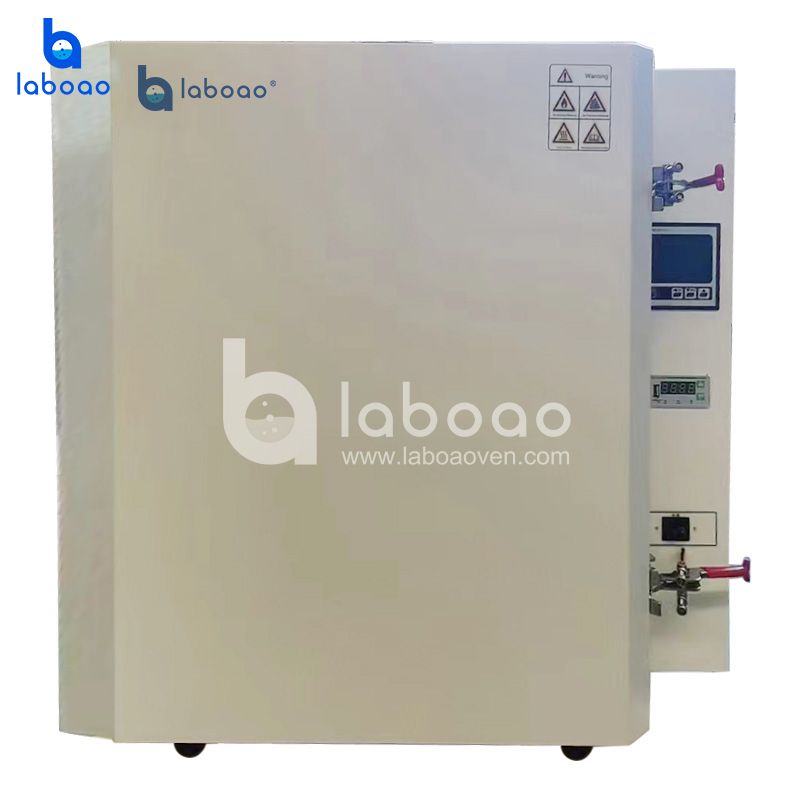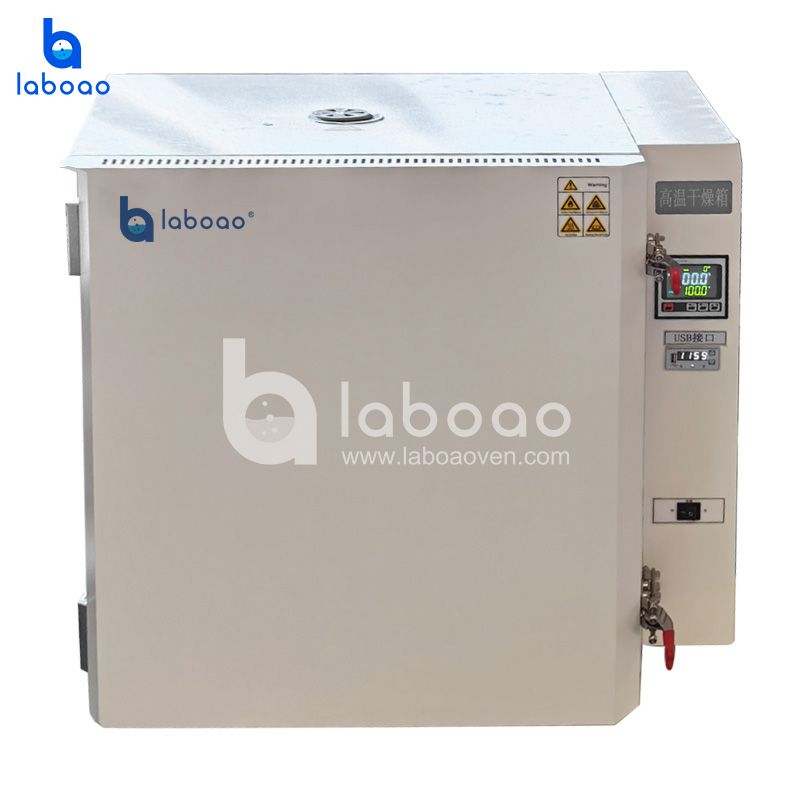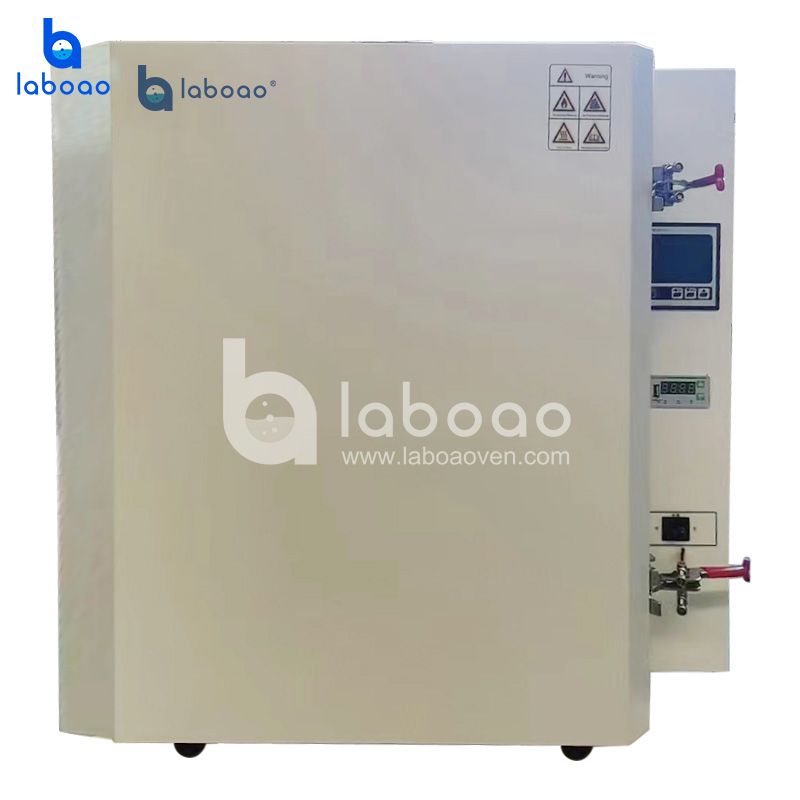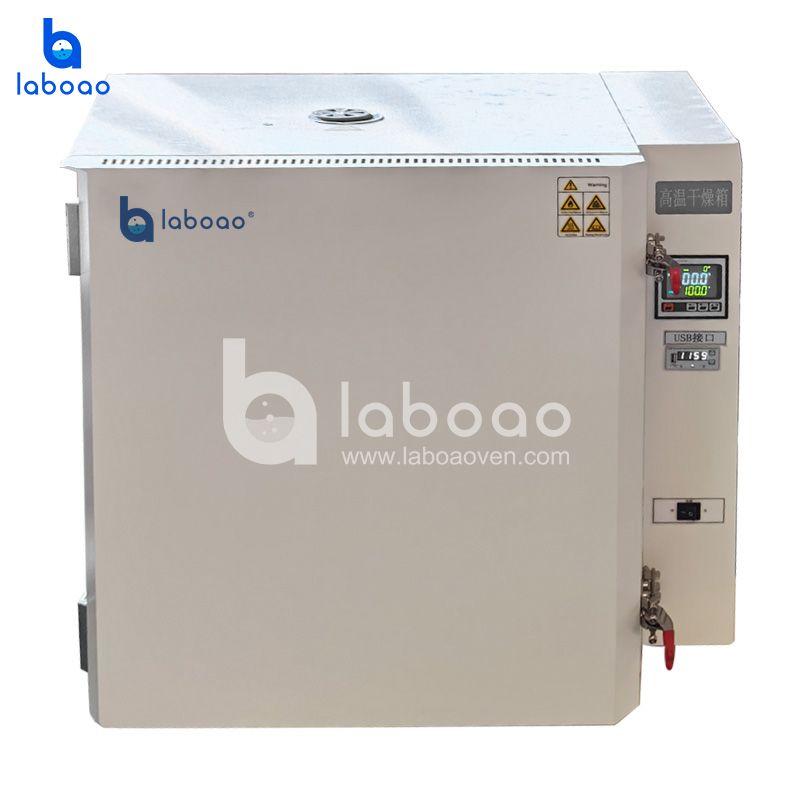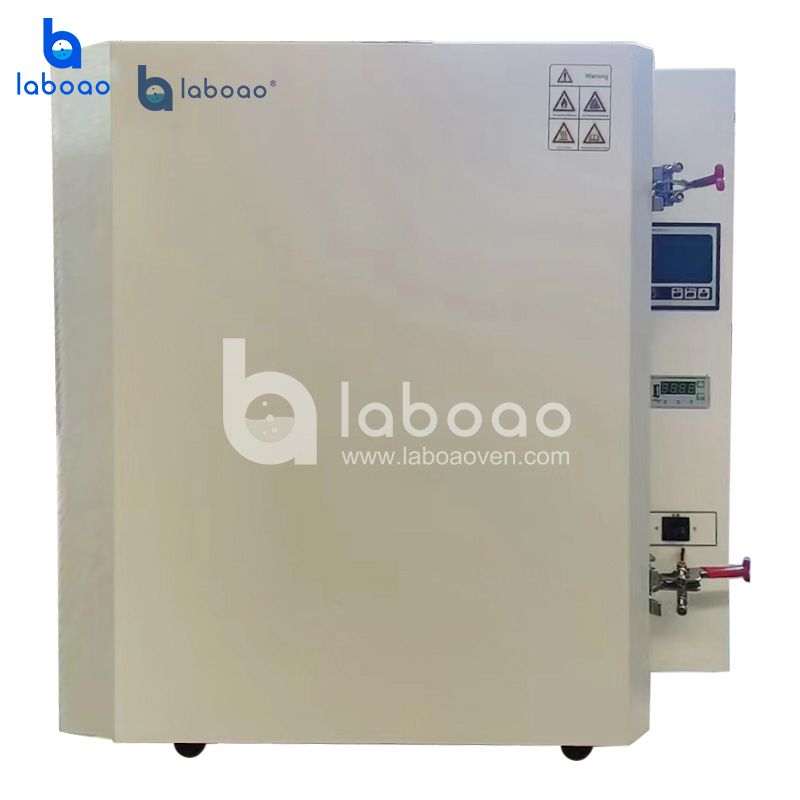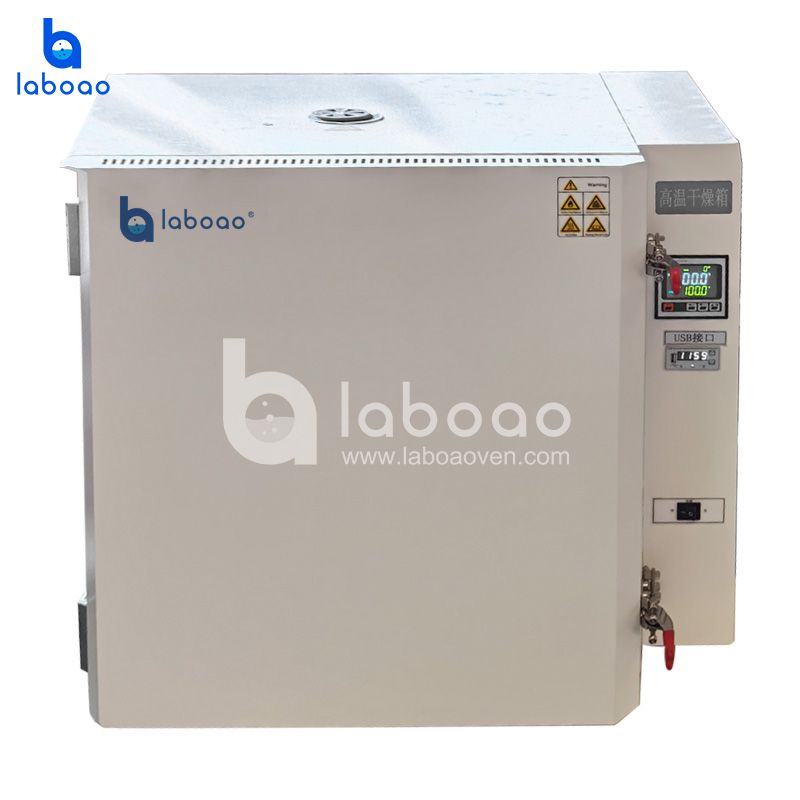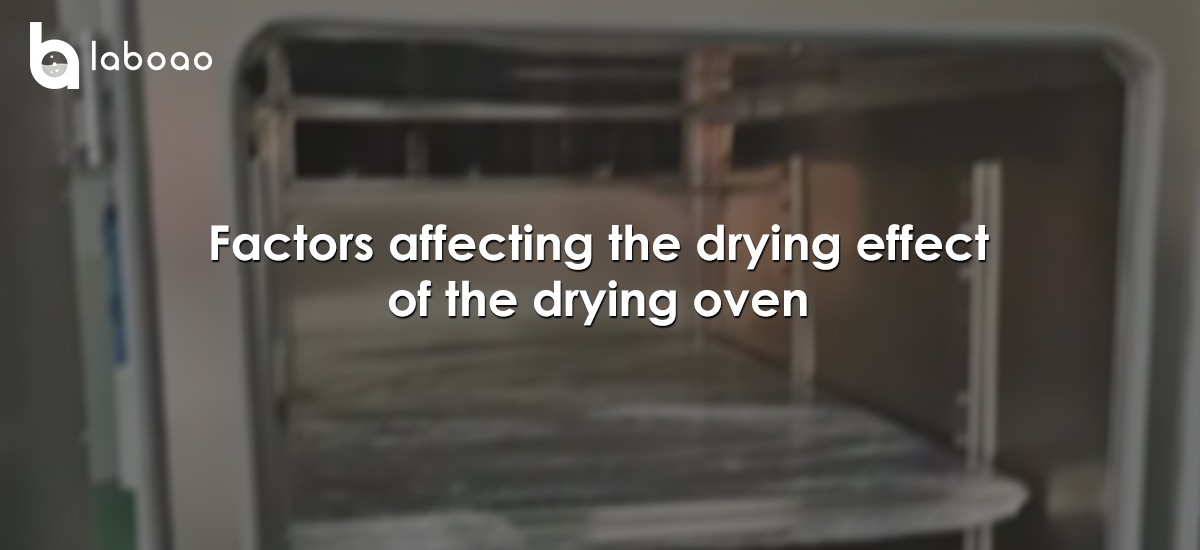
During the drying process, if the particles cannot be completely dried, we need to find factors that affect the drying effect of the drying oven. Generally, there are four types:
① Drying temperature: Heat is the key to opening the combined force between water molecules and hygroscopic polymers. When it is higher than a certain temperature, the attraction between water molecules and polymer chains will be greatly reduced, and the water vapor will be carried away by the dry air.
② Dew point: In the dryer, the wet air is first removed to make it contain very low residual moisture (dew point). Then, the relative humidity of the air is reduced by heating. At this time, the vapor pressure of the dry air is low. Through heating, the water molecules inside the particles get rid of the bond force and diffuse into the air around the particles.
Dew point readings can help find some problems, so the dry air dew point value should be monitored throughout the drying process. The dew point reading during normal operation of the dryer should be a straight line in the range of 20oF to 50oF. Of course, small fluctuations caused by changing the desiccant are normal. If the dryer is operating normally, the dew point at the dry air inlet should be at least 30oF lower than the dew point at the return air outlet.
On the other hand, the dew point peaks immediately after the desiccant is replaced, indicating that the desiccant was not cooled sufficiently before being placed, so that it cannot absorb moisture well. After cooling, the desiccant dew point will drop to normal standards. If the desiccant is not cooled properly, it will cause the temperature to peak, and the sudden temperature change will reduce the desiccant's drying ability for heat-sensitive materials such as ionomers, amorphous polyesters and certain nylon grades.
If the dew point reading is normal after the desiccant bed is replaced, but the dew point rises rapidly before the end of the desiccant drying cycle, it means that the ambient air may have entered the closed air circuit, causing the desiccant to absorb moisture prematurely. Another possibility is that the desiccant is not fully regenerated or contaminated. If the dew point reading is close to the return air dew point reading, it indicates that the regeneration air circuit has completely failed or the desiccant is seriously contaminated.
③ Time: In the air around the particles, it takes a certain amount of time for heat to be absorbed and water molecules to diffuse to the surface of the particles. Therefore, the resin supplier should specify the time it takes for a material to be effectively dried at the appropriate temperature and dew point.
④ Airflow: Dry hot air transfers heat to the particles in the drying silo, removes moisture from the surface of the particles, and then returns the moisture to the dryer. Therefore, there must be sufficient airflow to heat the resin to the drying temperature and maintain this temperature for a certain period of time.
When poor drying occurs, the problem should be found from the following three aspects:
1. Dryer condition
When checking the dryer, pay special attention to the air filter and hose. A clogged filter or a flattened hose will reduce the airflow, thereby affecting the operation of the dryer; a damaged filter will contaminate the desiccant and inhibit its moisture absorption capacity; a broken hose may introduce humid ambient air into the dry airflow, causing the desiccant to absorb moisture prematurely and high dew point; hoses and drying silos with poor insulation measures will also affect the drying temperature.
2. Drying air path
In the drying air path, the drying temperature should be detected at the silo inlet to compensate for the heat loss of the dryer in the hose. Low air temperature at the silo inlet may be due to improper adjustment of the controller and lack of insulation, or failure of the heater element, heater current contactor, thermocouple or controller. It is also important to monitor the drying temperature at various points throughout the drying process and observe temperature fluctuations when the desiccant is changed.
If the material is not properly dried after coming out of the dryer, check whether the drying silo is large enough to provide sufficient and effective drying time. Effective drying time refers to the time that the particles are actually exposed to the appropriate drying temperature and dew point. If the particles do not stay in the silo for a long enough time, they will not be properly dried. Therefore, attention should be paid to the size and shape of the pellets or crushed materials, which will affect the bulk density and residence time of the drying material.
A kinked hose or a clogged filter can restrict airflow and affect the performance of the dryer. Therefore, if the dryer is checked and no such problems are found, it is impossible to determine whether the airflow is sufficient. Here, there is a quick, simple and accurate way to detect whether the dryer airflow is sufficient, that is, to measure the vertical temperature curve of the material in the drying silo.
Assume that the material supplier recommends a drying time of 4 hours and a processing capacity of 100lb/h (1lb=0.4536Kg). To determine if the dryer has adequate airflow, measure the temperature curve in the drying bin, paying particular attention to the temperature at 4h (400lb). If the temperature at the 400lb level in the drying bin reaches the set value, then the airflow is considered adequate. If only the material at 1h, 2h, or 3h in the drying bin is fully heated, it means that the airflow is not enough to heat and dry the material at the specified production rate. Insufficient heating may indicate that the drying bin is too small for this production rate, or that the airflow is limited by a clogged filter or damaged hose. Too much airflow can also be problematic, not only wasting energy, but also causing high return air temperatures that damage the performance of the desiccant.
Return air filters prevent filamentary materials from contaminating the desiccant and affecting its moisture absorption performance. These filters must be kept clean to ensure adequate airflow.
When the dry air comes out of the top of the dryer, most of the heat has been released. Most dryers can operate efficiently when the desiccant temperature is in the range of 120oF to 150oF. If the return air overheats the desiccant, it will reduce its ability to absorb moisture from the drying air.
Always check the return air temperature of the dryer. When the return air temperature is high, it may mean that the dryer is too large for the production rate, or the material is too hot when it enters the drying silo, for example, PET has crystallized before drying, or the drying temperature of some materials (such as PET) is simply above the normal temperature range. To prevent the return air temperature from getting high, just install a heat exchanger in the return air path to ensure that the desiccant can effectively remove moisture from the drying air.
3. Regeneration and cooling of desiccant
The moisture absorption capacity of the desiccant is limited, so the moisture it absorbs must be removed by regeneration. The process is: when the ambient air is sucked in, it passes through a filter into the blower and then is sent to a set of heaters. The heated air passes through the desiccant bed. As the temperature of the desiccant rises, the absorbed moisture is released. When the hot air absorbs water vapor to saturation, it is discharged into the atmosphere. The high temperature regenerated desiccant must be cooled before returning to the drying loop to restore the desiccant's moisture absorption function.
